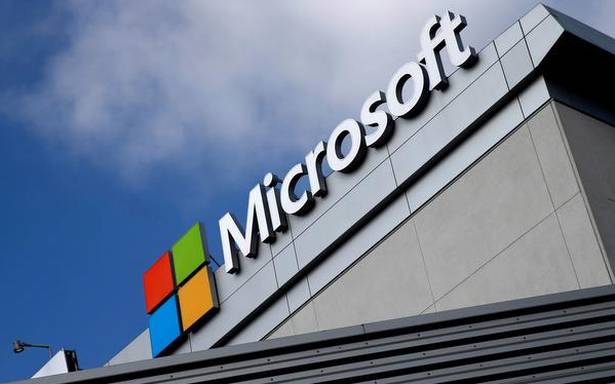Microsoft has jumped on the metaverse bandwagon, with two new announcements at its Ignite 2021 event on Tuesday, pertaining to “the evolution into the metaverse.”
“As the digital and physical worlds come together, we are creating an entirely new platform layer, which is the metaverse. We’re bringing people, places and things together with the digital world in both the consumer space, as well as in the enterprise,” Microsoft CEO Satya Nadella said at the event.
Microsoft’s announcements come soon after Facebook rebranded the parent company to ‘Meta,’ to emphasise its plans for the metaverse.
Microsoft has announced that it will be launching a new solution, Mesh for Teams in 2022. Positioned as the “gateway to the metaverse,” the solution will enable users to be present in a meeting using personalised avatars and immersive spaces that can be accessed from any device, with no special equipment needed.
It has also announced the launch of Dynamics 365 Connected Spaces. Currently in preview, “this product provides a new perspective on the way people move and interact with nearly any space, from the retail store to the factory floor, and how they manage health and safety in a hybrid work environment,” the company said in a statement.
“When we talk about the metaverse, we’re describing both a new platform and a new application type, similar to how we talked about the web and websites in the early ’90s. Across the Microsoft Cloud, from Azure IoT to Azure Digital Twins to Connected Spaces and Microsoft Mesh, we’re building the metaverse platform for you to expand upon. In a sense, the metaverse enables us to embed computing into the real world and to embed the real world into computing, bringing real presence to any digital space,” Nadella said.
Mesh for Teams
Microsoft has unveiled its new solution Mesh for Teams, its video conferencing platform which will begin rolling out in 2022.
“The feature combines the mixed-reality capabilities of Microsoft Mesh, which allows people in different physical locations to join collaborative and shared holographic experiences, with the productivity tools of Microsoft Teams, where people can join virtual meetings, send chats, collaborate on shared documents and more,” the company explained in a blog post.
Mesh will build on existing Teams features such as Together mode and Presenter mode that make remote and hybrid meetings more collaborative and immersive, according to Jeff Teper, a Microsoft corporate Vice President whose responsibilities include the Microsoft 365 productivity tools Teams, SharePoint and OneDrive.
“We are taking these platform capabilities and building them into our own first-party applications, like Teams. Features like grid views, Together Mode and Presenter Mode in Teams mark the beginning of bringing 2D immersive experiences to collaboration,” said Nadella.
Once available, users will be able to access Mesh for Teams from standard smartphones and laptops as well as mixed-reality headsets. Users will be able to join a standard Teams meeting as a customised avatar of themselves instead of as a static picture or on video. Other attendees might also be represented by avatars, show themselves on video or use a static picture or bubble with initials.
“organisations can also build immersive spaces – metaverses – within Teams. Mesh for Teams users can take their avatars into these spaces to mix and mingle, collaborate on projects,” the company said.
Mesh for Teams will roll out with a set of pre-built immersive spaces to support a variety of contexts, from meetings to social mixers, it added.
First steps
“To start, we will take audio cues so as you talk, your face will animate,” said Katie Kelly, a principal project manager at Microsoft working on Mesh for Team.
“You’ll also have animations that bring additional expressivity to the avatars. Your hands will move. There will be a feeling of presence even though it’s as simple as being able to take your audio and manifest that as facial expressions. That’s the first release. The ambition is to closely follow that with Microsoft’s plethora of AI technologies so that we can use the camera to insinuate where your mouth is and mimic your head and facial movements,” Kelly further explained.
The experience will continue to evolve over time as sensor technology improves across devices, from phones to virtual reality headsets, from laptops with a single microphone to a HoloLens with six microphones and 16 cameras, according to the company.
“For years, we’ve talked about creating this digital representation of the world, but now, we actually have the opportunity to go into that world and participate in it. What’s most important is that we are able to bring our humanity with us, and choose how we want to experience this world and who we want to interact with,” Nadella said.
Take, for example, Dynamics 365 Connected Spaces, which we are announcing this morning. Connected Spaces provides a new perspective on the way people move and interact in physical spaces, whether it’s a retail store or a factory, or even how organisations manage health and safety in a hybrid work environment. You can do analytics, you can get real-time insights, you can run simulations, you can automate routine tasks.

























